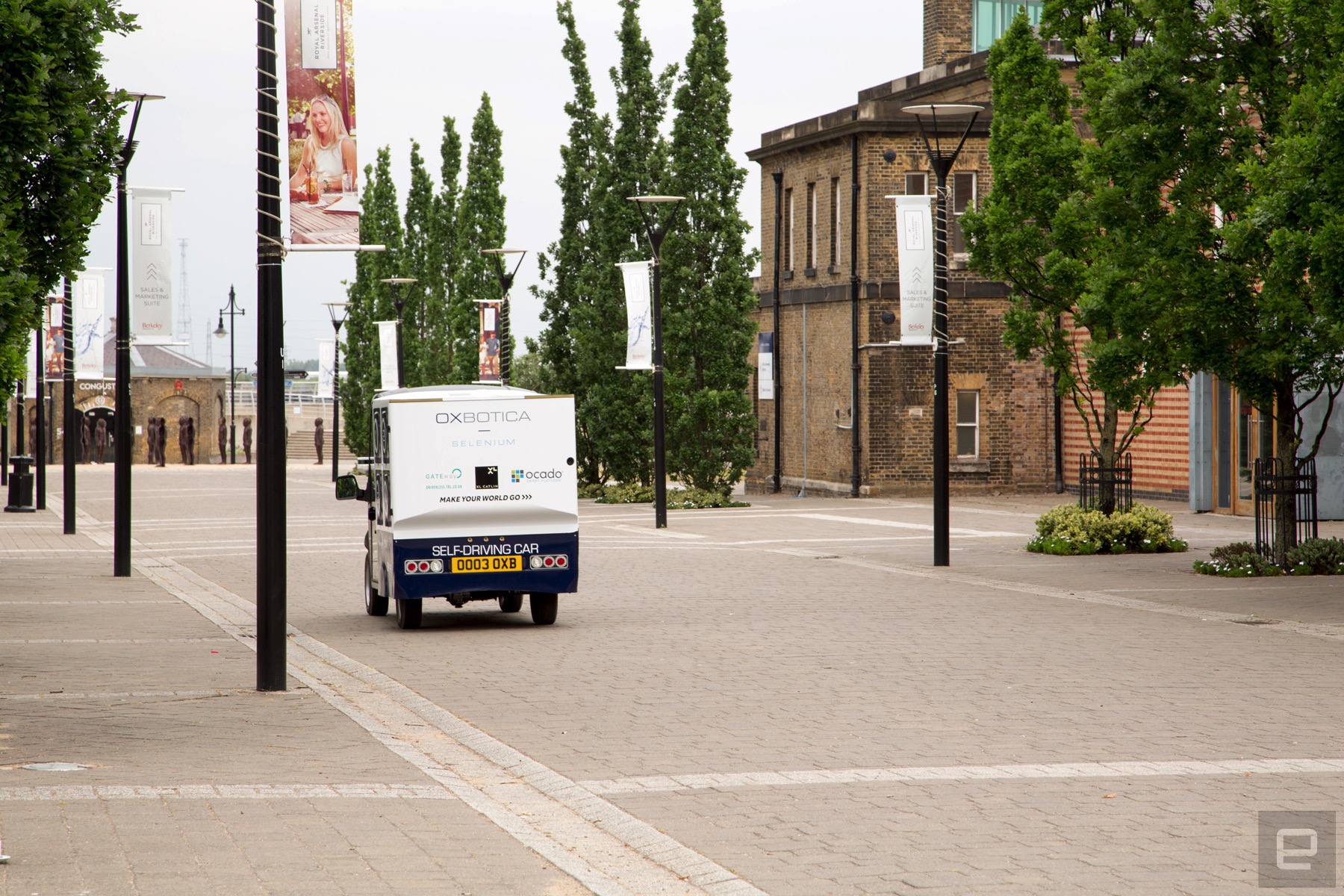On a quiet Tuesday morning, a swarm of press are able to watch the truck in action. As the vehicle completes its pre-determined route, we take turns walking up and retrieving the bags inside. It all feels a little silly, in particular because there’s an emergency driver inside the cockpit. Before I get close to the button, he clambers out and stands on the roadside, ready to help with the delivery. I open the hatch and he takes out the basket, handing over the hamper with a smile. I appreciate the service, but as a customer it defeats some of the purpose of a fully autonomous delivery.
Still, the potential is obvious. In the not too distant future, your weekly food shop could be dropped off by a fleet of self-driving robots.
Oxbotica built the CargoPod using an “off the shelf” electric car platform. To make it autonomous, the team added cameras to the front and back and two sets of LIDAR — the laser based equivalent of radar — just above the wing mirrors. Together, these sensors detect and visualise everything around the truck, including cars, pedestrians and lamp posts. Notably, there’s no GPS on board. “We don’t use GPS in any of our solutions because it’s not reliable enough for the environments we work in,” Graeme Smith, CEO of Oxbotica explains. “So we use cameras to help us map a route. For example, you won’t see this type of area mapped in any great detail, by any third party, so we use cameras to map the route and then in real time, we use the onboard cameras to localise and help us follow that route.”

The CargoPod is powered by Selenium, an autonomous operating system developed by Oxbotica. It handles minute-to-minute visualisation and decision-making: where the vehicle is, what’s nearby and what it should do next. The system works with Caesium, a cloud-based platform (also developed by Oxbotica) that can manage and coordinate fleets of autonomous vehicles. For the two-week trial in Greenwich, it’s been linked with Ocado’s back-end logistics software, planning and updating CargoPod delivery routes. Caesium, can however, be used for other purposes too, such as public transport and Uber-style ride-hailing services.
Oxbotica is exploring these areas in other driverless car trials. It was involved in the Lutz Pathfinder project, which ran for 18 months and tested small, four-wheeled pods in Milton Keynes. The team is also working on the Gateway shuttles ferrying passengers around North Greenwich.
The CargoPod is just a prototype. A final version would, for instance, require a keypad or some form of verification system to stop orders from being stolen mid-route. For now, Ocado and Oxbotica are content delivering orders in a safe, controlled environment. Each trip produces valuable data which they can later analyse and use to improve the system.
“At the moment our system is working 95 percent of the time,” Smith says. “We always have a safety engineer in the car who can take control if we have to drive around an unexpected obstacle. But what we’re trying to do is collect lots of data so we understand more about the environment and [the] unique and quirky incidents that happen around us.”




